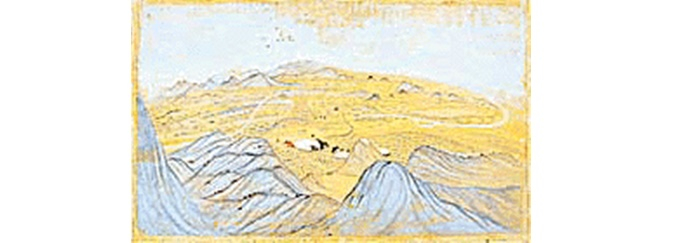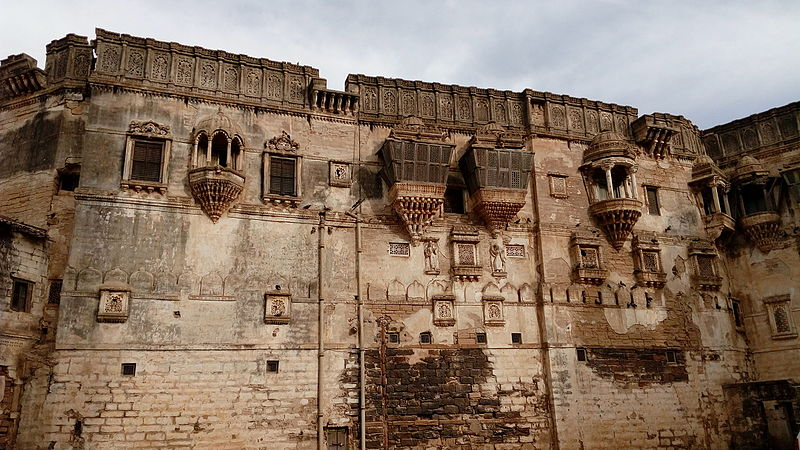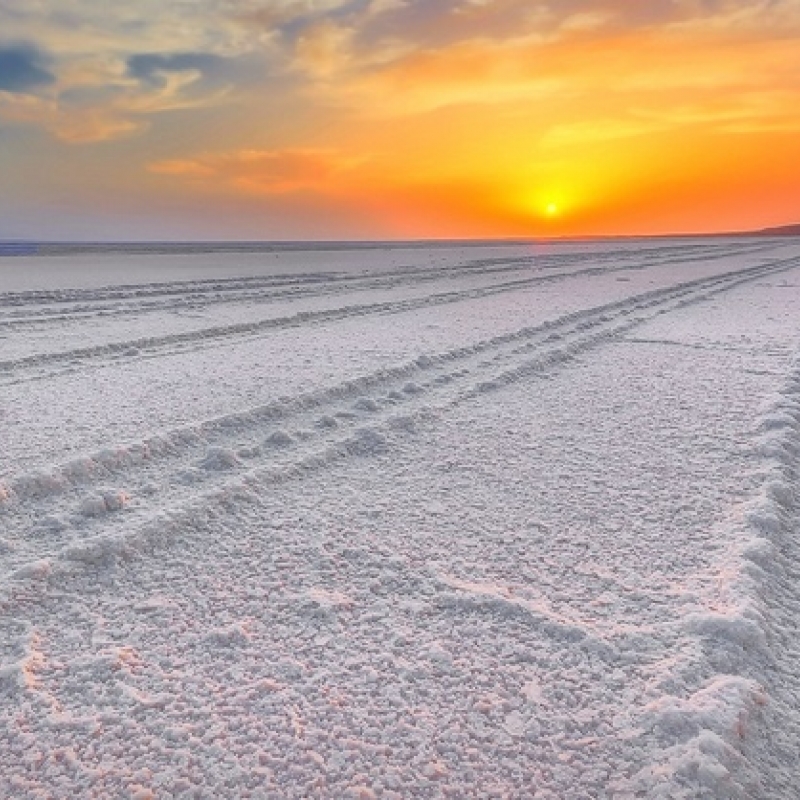Kutchi artwork is truly unique in the history of Indian painting. Prof. B.N. Goswamy writes about how the painters incorporated European elements while ‘recording’ their own, immediate environment (Photo courtesy: Rahul Zota/Wikimedia Commons)
This article appeared originally in The Tribune, Chandigarh and is reproduced here with permission.
In the face of the great natural calamity that has befallen Kutch, the desperate loss of lives and property in the entire region, it might seem almost irrelevant to be speaking of its arts at this point of time. And yet if one does, it is only with a view to re-emphasising how little we, in this part of the country, know of the region, or of the treasures it holds. And how much one needs to know.
Long years back I was involved in writing a book, bearing almost the same title that this piece does, on the paintings of Kutch. This is how the book began: "Traditionally, the land called Kutch has often been likened in appearance to a tortoise, its very name suggestive of a link: kaccha, in Sanskrit, means ‘a bank or any ground bordering on water; a marsh", and kacchapa is ‘a turtle, a tortoise’. But the Mahabharata also speaks of it as a ‘cardamom-like island’, while referring to its people, the Abhiras."
"Both descriptions are vivid", I had continued then. "They are also perhaps apt beyond the strictly topographical sense in which they are employed, for they capture something of the character of the region and its people.
Also see | Ramnami Community of Chhattisgarh
Kutch is like a tortoise: like one, it straddles both land and sea; it is seemingly ageless, well protected on its back; when it ventures out, it does so with much caution, but quickly withdraws into its shell at the first indication of danger; slow of movement, but remarkable in persistence. At the same time, working on its history one might find Kutch also to be like a cardamom: dry and uneven on the outside, but full of surprises within. Inside, its people, like so many little seeds, are held together firmly by a fine filament, and as one gets close to its heart, a mild, gentle aroma rises and fills the air. Getting to know it can be a distinct pleasure."

In its physical aspect alone, the region is unlike any other on the Indian subcontinent. The Rann of Kutch—"a space without a counterpart in the globe", as one writer called it—has evoked, in generation after generation of visitors, a sense of remarkable awe, mystery. Like an endless, dried up sea, the Rann stretches over 23,000 square kilometres of area, where neither herb nor forage nor tree is to be seen for miles on end: a tract of dazzling whiteness, to be crossed safely only in the night, and tracks in it still indicated by stones or the bones of dead animals half-buried along their sides. Even the mirage in the Rann is different, the action of the sun on saline particles somehow working differently here. But not all of Kutch is like this, of course, large areas being habitable, even green, with low, bare hills possessed of a strange beauty.
Also read | How the Art of Portraiture Developed in India
Here, in this fascinating land, where the proud house of Jadejas ruled for several centuries, seafaring was a long and robust tradition. Vasco da Gama is said to have seen a Kutchi craft anchored at Mombasa; it is from Kutch ports that boats used to sail for the Haj pilgrimage reign after reign in Mughal times; the navigation charts and the cabinet of instruments that Kutchi sailors carried with them could, in the words of a nineteenth century English observer, be the envy of any European. And it is to the Kutchis’ love of the sea that, in a curious way, one owes what is one of the most absorbing chapters in the history of Indian painting.
Early in the eighteenth century, a young sailor, Ram Singh, later nicknamed ‘Malam’, "the Navigator", became a shipwreck during a voyage to Africa, was rescued by a Dutch boat, reached Holland where he stayed for close to 18 years and acquired an astonishing range of skills: glass-blowing, clock-making, gun-casting, tilework, jewellery. When he returned, he found an avid patron in Lakhpatji (1741–1761), the Maharao who ruled over the destinies of Kutch then. To this magical coming together of a craftsman of remarkable talents and a prince with an inexhaustible curiosity, the crafts of Kutch owe so much. The Aina Mahal—‘Palace of Mirrors’—at Bhuj, filled as it was with the most exotic of objects, an exciting mix of European notions and Indian craftsmanship, stands to this day as testimony to this. As far as painting goes, much was to happen following Ram Singh’s arrival in Kutch. For, it seems, that with him he brought a sheaf of European etchings on paper—views of cities like Rome, Venice, Vienna, London—which must have appeared passing strange not only to the Maharao but also to the few local painters then working in an idiom of the Rajasthani style for him. Everything in these prints was different: a different way of handling space, wild and irregular clouds, small figures in European dresses casting shadows over stone pavements in well laid-out piazzas, odd-looking doors, windows and balconies. As a matter of curiosity, the local painters seem to have been asked to produce copies of these prints, and, to one’s delight, one sees whole sets: one European etching with several Indian ‘versions’ of it, some successful, others less so, still others simply venturesome. This must have gone on for a while.

But then followed what makes Kutch work truly unique in the history of Indian painting. Tiring of imitating European works, it seems, but having learnt some lessons from them, the Kutchi painters turned their hands to ‘recording’—not dryly, but with great warmth—their own, immediate environment: bare, dark hills, shrines by the seaside, views of walled towns seen from a distance, a lake espied from the top of the royal palace, and the like. In the process, they brought into being what may be called the only truly observed landscapes in Indian art prior to the twentieth century. There are wonderful views of Bhuj, Anjar, Bhachau, Mundra—towns one is now hearing of, though in the sad context of earthquake damage—that one sees rendered by Indian hands. And there is excitement in them, great visual stimulation.
Those Blue Hills
My favourite remains a view taken from a high hill, with more hills, blue and bare and rocky, spread out, all around a plain to which the eye precipitously descends. Looking past bare undulating peaks, one sees, in the middle of the picture, a little encampment by the side of a pool of water with some trees. A road from there seems to lead far into the distance, where sparse clumps of bushes are scattered about. The landscape is arid, but holds no menace. There is majesty in the scene, and a distinct stillness. The colours are delicate, subtly graded blues and earthy browns. The little camp is set as it were in a grand amphitheatre of nature. In this painting, the painter feels the landscape: it is as if, standing at the point from which he painted the scene, he were breathing the clear air and caressing those slopes with his eyes.
This article has been republished as part of an ongoing series Art N Soul from The Tribune.













